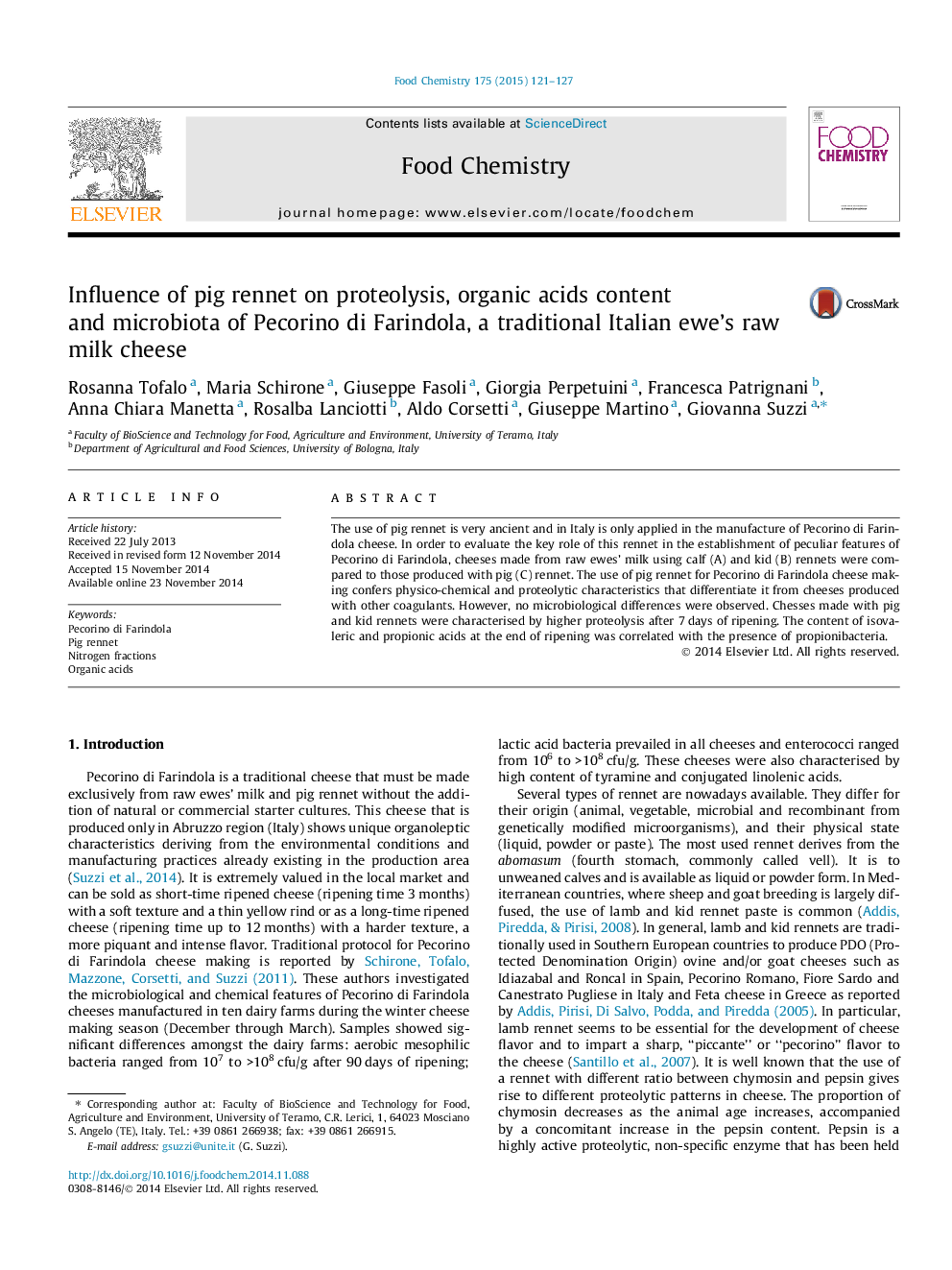| Article ID | Journal | Published Year | Pages | File Type |
|---|---|---|---|---|
| 7593178 | Food Chemistry | 2015 | 7 Pages |
Abstract
The use of pig rennet is very ancient and in Italy is only applied in the manufacture of Pecorino di Farindola cheese. In order to evaluate the key role of this rennet in the establishment of peculiar features of Pecorino di Farindola, cheeses made from raw ewes' milk using calf (A) and kid (B) rennets were compared to those produced with pig (C) rennet. The use of pig rennet for Pecorino di Farindola cheese making confers physico-chemical and proteolytic characteristics that differentiate it from cheeses produced with other coagulants. However, no microbiological differences were observed. Chesses made with pig and kid rennets were characterised by higher proteolysis after 7Â days of ripening. The content of isovaleric and propionic acids at the end of ripening was correlated with the presence of propionibacteria.
Keywords
Related Topics
Physical Sciences and Engineering
Chemistry
Analytical Chemistry
Authors
Rosanna Tofalo, Maria Schirone, Giuseppe Fasoli, Giorgia Perpetuini, Francesca Patrignani, Anna Chiara Manetta, Rosalba Lanciotti, Aldo Corsetti, Giuseppe Martino, Giovanna Suzzi,
